HTC One S Review - International and T-Mobile
by Brian Klug on July 17, 2012 9:30 AM ESTAt the very top of HTC’s new lineup are three flagship devices: the One X, its cousin the One XL, and the One S. I say flagship because HTC’s One S is really a device with a level of fit and finish beyond the rest of the high-end to midrange device category. Don’t let its diminutive size and 4.3" display fool you, the One S packs a lot of punch. It’s almost funny to write it, but the T-Mobile One S has been the device I’ve been reaching for more often than a few other larger size phones for a while now. For those wanting a device with arguably the best in-hand feel around, and an outline that isn’t large like the norm, the One S might make more sense than the One X.
First off, the One S is internally very similar to the HTC One X (AT&T) or HTC One XL - it includes essentially the same dual core Snapdragon S4 Krait SoC at 1.5 GHz with 1 GB of LPDDR2 RAM. The only change is in cellular baseband, which gets reflected in the SoC’s name (MSM8960 for connectivity including LTE, MSM8260A in the case of the One S for GSM/EDGE and dual-cell WCDMA).
Superficially, however, the One S is completely different from the One X. The One S eschews the unibody polycarbonate frame for a metal frame with a unique twist - it tapers and gets thinner at the center. Coming from so many devices that are shaped like a water droplet or sphere (and thus bulge out in the middle), holding the One S is almost shockingly different at first.
I’ve written before that I honestly think HTC won the industrial design category this time around - the One S is exhibit number one in my case for that argument. The combination of a Super AMOLED display and this unique metal construction helps the One S be very thin as well. It’s 7.8 mm at its thinnest point.
Up at the top and bottom are plastic soft touch inserts which double as RF windows for the One S. The one at the very top pops off to reveal the phone’s microSIM slot, IMEI number, and regulatory stickers. As usual HTC has its gold springs here which push and mate up with the antenna traces on the backside of the plastic - there’s WiFi, BT, GPS, and the WCDMA diversity antenna up here. This isn’t the first time HTC has used plastic elements that snap on or off as antennas before, either. The cover is easy to snap on and off, and there’s HTC’s trademark splash of color on the plastic exposed underneath. Note that just like the HTC One X, there’s no microSD card slot, so the 16 GB of onboard storage is what you get. That, and a sealed internal battery.
Up at the very top is the 3.5mm audio jack, secondary microphone port for noise cancelation on calls, and the standby/lock button. I have no complaints about the button placement or clickiness.
Like the One X, HTC has placed the microUSB port on the left side about three quarters of the way up the device, which means you can use the device portrait without having the USB plug get in the way of your hand. I also still suspect that like the One X, the PCB is in this upper region, leaving the bottom portion of the device entirely for battery.
The right side is home to the single piece volume rocker which I have no complaints about. It’s clicky and excellent.
The bottom is home only to the primary microphone port, which is on the plastic RF window region. Also in this region on the backside is the One S’ speakerphone grille, which is a grid of laser cut pinholes just like the One X.
On the front, we have the 4.3" SAMOLED display and three capacitive buttons (back, home, and the task switcher). Up at the top are the earpiece grille (again, pinholes) and behind this grille is the two-tone notification LED. At far right is the VGA front facing camera. I have no complaints with the fit and finish here, although the notification LED on the One S is likewise difficult to notice at a glance unless you’re aligned perfectly normal (in the angular sense) to the phone’s front surface.
The LED glows orange when charging and turns to solid green when fully charged, in addition to blinking green for other notifications. I will say that it’s rather unfortunate that the One X and One S have such hard to see notification LEDs. It’s even more puzzling because the One V has a positively excellent notification LED.
I guess that brings us to the backside, which again is rather unique with its center taper. The metallic frame is either subjected to HTC’s micro-arc oxidation process (if it’s black, like our International One S) or otherwise left untreated like the T-Mobile One S. There’s a difference in the texture between the two, but it isn’t super dramatic - the micro-arc oxidized International One S (which is black) feels somewhat coarser. Honestly, I find both of them very appealing when it comes to their in-hand feel.
The other best part is that because the One S is metal, I haven’t seen any of the plastic wearing or scuffing that I did with the One X. The device does rest planar with flat surfaces and make contact on the plastic regions, but because the surface is a more traditional soft touch finish the contact scuffs tend to buff out rather than become permanent fixtures like they do on the One X.
| Physical Comparison | ||||
| Samsung Galaxy Nexus (LTE) | Apple iPhone 4S | Samsung Galaxy S 3 (USA) | HTC One S | |
| Height | 135.5 mm (5.33") | 115.2 mm (4.5") | 136.6 mm (5.38" ) | 130.9 mm (5.15" ) |
| Width | 67.94 mm (2.67) | 58.6 mm (2.31") | 70.6 mm (2.78") | 65 mm (2.56") |
| Depth | 9.47 mm (0.37") | 9.3 mm ( 0.37") | 8.6 mm (0.34") | 7.8 mm (0.31") |
| Weight | 150 g (5.3 oz) | 140 g (4.9 oz) | 133g (4.7 oz) | 119.5g (4.21 oz) |
| CPU | 1.2 GHz Dual Core Cortex-A9 OMAP 4460 | Apple A5 @ ~800MHz Dual Core Cortex A9 | 1.5 GHz MSM8960 Dual Core Krait | 1.5 GHz MSM8260A Dual Core Krait |
| GPU | PowerVR SGX 540 | PowerVR SGX 543MP2 | Adreno 225 | Adreno 225 |
| RAM | 1 GB LPDDR2 | 512MB LPDDR2-800 | 2 GB LPDDR2 | 1 GB LPDDR2 |
| NAND | 32 GB NAND | 16GB, 32GB or 64GB integrated | 16/32 GB NAND with up to 64 GB microSDXC | 16 GB NAND |
| Camera | 5 MP with AF/LED Flash, 1080p30 video recording, 1.3 MP front facing | 8 MP with LED Flash + Front Facing Camera | 8 MP with LED Flash + 1.9 MP front facing | 8 MP with LED Flash + VGA front facing |
| Screen | 4.65" 1280x720 HD SAMOLED | 3.5" 640 x 960 LED backlit LCD | 4.8" 1280x720 HD SAMOLED | 4.3" 960x540 Super AMOLED |
| Battery | Removable 6.85 Whr | Internal 5.3 Whr | Removable 7.98 Whr | Removable 6.1 Whr |
I can’t emphasize enough how much I enjoy the form factor of the One S. In a world where it seems like every smartphone OEM is in a race to see just how big they can make their phones before people start either complaining or creating a niche market for clothing with oversized pockets, the One S is a refreshing lesson that sometimes size isn’t everything.
As an aside, it’s kind of wearing on me that so much of smartphone form factor discussion is purely about device size anymore. It’s superficial, and plus, what would Freud say?
Cases
HTC has gone along with the increasingly popular route of making cases for its own phones. This approach does make sense - the OEM ostensibly already has the CAD files for building a case which perfectly matches the exterior parameters and tolerances of the phone, and knows it better than anyone. Plus, why lose out on the accessory revenue? Apple and Samsung both do it, after all.
In the case of the HTC One S, there are two different case designs available, and a variety of colors. One includes a kickstand and is slightly thicker to accommodate it. Both are pretty simple and protect the back and sides with a hard polycarbonate soft touch material. The front is not protected, for that you’ll need a screen protector.
HTC sent us their whole variety of cases for the One S and I’m extremely pleased with them. The case snaps on around the back and side of the One S and has appropriate cutouts for the external ports and buttons. Most impressive is the way the case still communicates the center taper, which is probably one of the One S’ largest unique design elements. Further, the material doesn’t feel cheap or plasticky at all - I’ve always come away impressed with the coatings HTC goes with for its soft touch material.
I’ve carried around my T-Mobile One S in the kickstand-less grey case for a while now and have no complaints at all. It’s excellent and hasn’t scuffed or peeled at all. Even though HTC advertises the micro-arc treated International One S as not needing a case, it still makes sense to have one to prevent against deep scratches that can reveal the un-oxidized material underneath.
Speaking of the metal material, it’s worth talking about HTC’s metal treatment process. In the case of the HTC One S, it’s a “micro-arc” oxidation treatment, which you can see in one of their own videos taking place. Unfortunately that’s about all the detail there is out there about the HTC One S’ treatment, other than that it is both more than a coating, and only applies to the International HTC One S, not the T-Mobile One S which is blue.
I asked one of my materials science and engineering masterminds, Matt Goodman, what he thought about the process. He replied with the following:
Looks like some sort of plasma arc process. There are all sorts of insane oxides you can deposit via e-beam or plasma sputtering of some variety. I recall that some media player that I had had this sorta coating back in 2005ish, but it is still far from mainstream. Google for metallic glass coatings, basically nano/micro-grain ceramics. Wickedly strong especially if they are well bonded to the metallic substrate.
Based on the visible plasma in the HTC video, and some quick googling, I’d say it looks fairly obvious that some sort of sputtering is involved with the One S treatment process.
As I noted before, the HTC One S International version (which is black) feels different in a subtle way from the HTC One S on T-Mobile which lacks this treatment. It definitely sets the hardware apart and makes the in-hand feel of the device one of the most, if not the most, unique in recent memory. It’s funny that HTC notes in their micro-arc video that you don’t need a case (even though they have made first party cases for the device). That said, I haven’t had any of the scuffing or rubbing issues that were popularized immediately after the device’s release.



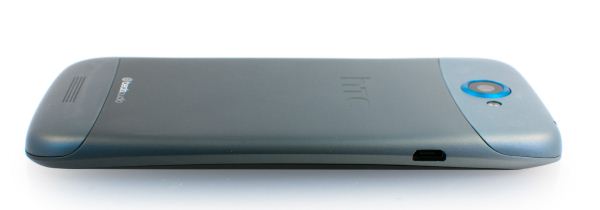
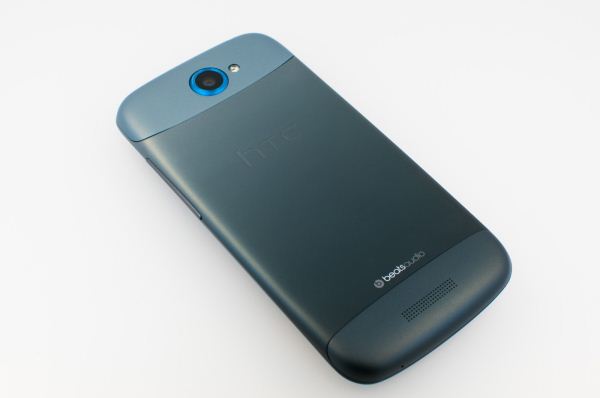
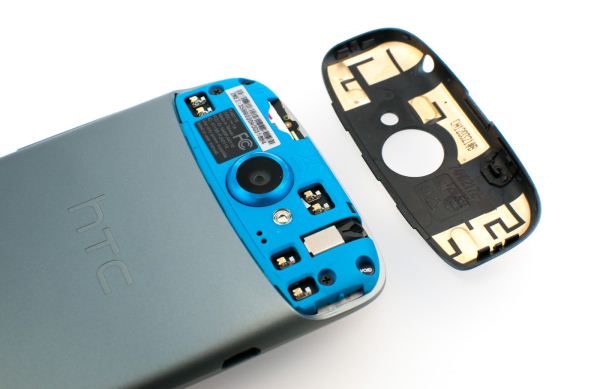
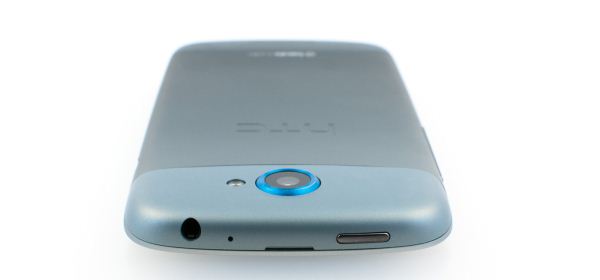
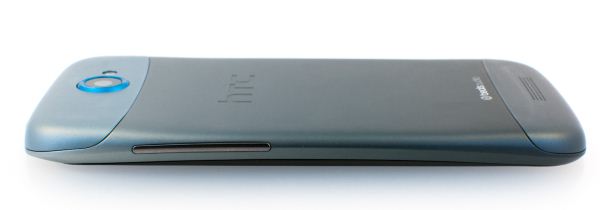

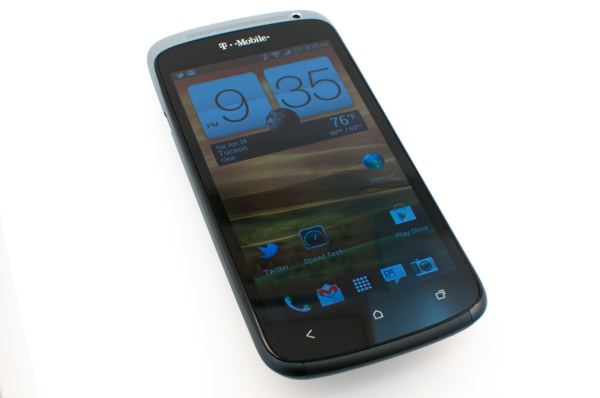
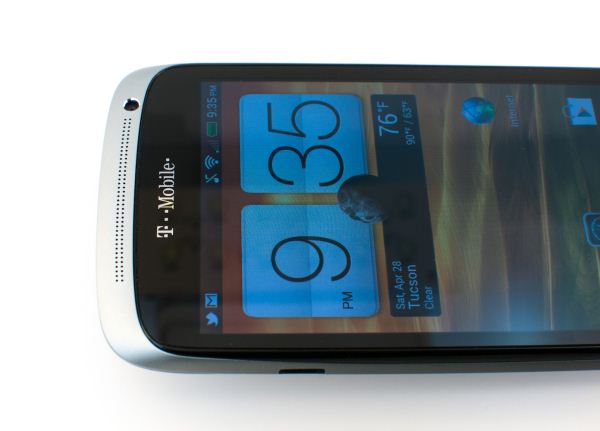
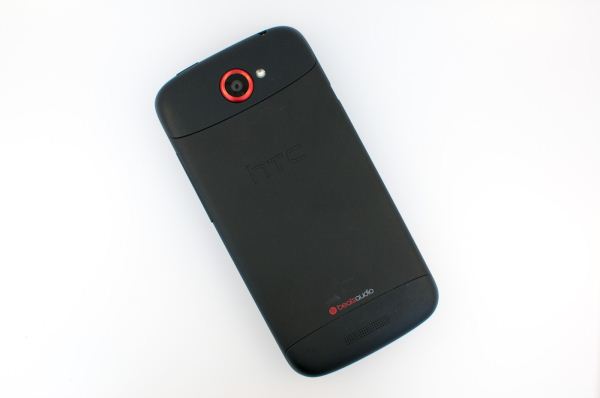






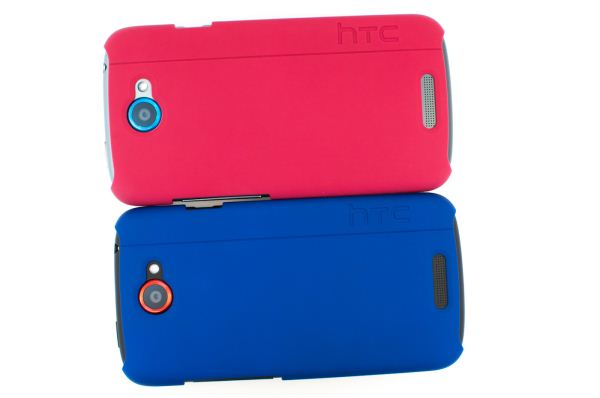
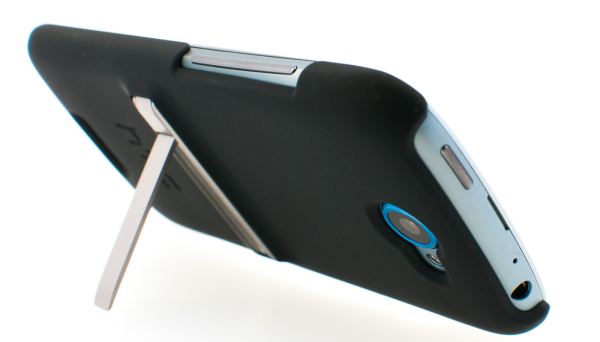
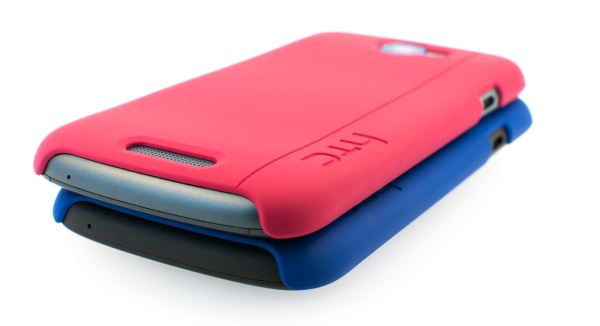














97 Comments
View All Comments
dgingeri - Tuesday, July 17, 2012 - link
as a One S owner for the last few months, I'm happy to say it's the best phone I've ever had. I'm thoroughly impressed with it. The only issues I have with it is that it's kind of hard to hold on to at times. I have dropped mine twice because the back surface is a bit slippery.I hadn't seen the cases, though. those look nice. I think I'll get one to offset that slippery back problem.
mgl888 - Tuesday, July 17, 2012 - link
Is there manual aperture control available for the camera? I don't see it in the GUI screen shots.Brian Klug - Tuesday, July 17, 2012 - link
No sadly, although no smartphones I'm aware of have variable apertures. Nokia gets closest by implementing an ND (neutral density) filter that attenuates light, but the aperture is fixed.-Brian
Zoomer - Thursday, July 19, 2012 - link
To be honest, the FOV difference is so small on the tiny lens.OCedHrt - Tuesday, July 17, 2012 - link
I've had a T-Mobile One S for about a month now and...1. I hate the USB port on the left - this makes the phone unusable as an incar GPS device because the USB cable is on the driver side.
2. Having just enough USB length for my previous phone with a USB port on the bottom, there just isn't enough left over reach with the USB port on the left.
3. Having the USB port just opposite of the volume buttons mean it's unavoidable you mess with the volume when plugging in the USB port with the screen on - such as when you're on the phone and try to plug it in only to find you've muted yourself.
4. HTC's marketing on this phone is very misleading - up until this article I did not know that T-Mobile's version did not have micro-arcing and I already have scuffs on metal back of the device.
5. The USB port also chips when trying to plug in the USB cable, as reported by many other owners. There is supposedly a revised version with a tapered USB port to fix this, but it seems not all carriers get it.
6. The power button on top is also not very accessible. As much as I prefer a HTC device over Samsung's, I still prefer power on one side with volume on the opposite. The usb power port on the bottom has not gotten in the way of me using the phone.
7. Finally, HTC seems to have silently swapped many One S's with higher clocked S3 instead of S4 due to shortages - this has created a bit of PR backlash in the affected markets.
Belard - Tuesday, July 17, 2012 - link
USB placement is never a perfect science... you are not holding it right :)Hence the only thing throwing me off of HTC phones is the power button on TOP and the vol rockers on the right side. Makes for 1 finger control I think. But for me and these HUGE phones, I didn't like. Samsung sticks its vol buttons on the left side, so they put their USB ports on the bottom, but they DID put them on the TOP for a while.
With this arrangement, thumb controls vol and index is more comfortable for the power.
For me, I think the top mounted USB makes a bit most sense, but doesn't look as good and in more danger of rain damage. With it on top, the phone can be oriented right when charging or is plugged into USB speakers. Mostly takes care of the GPS issue in the car... so top or bottom makes the most sense for a phone.
Again... thou, it still depends on the person.
PS: Hate rubber covers over the ports on phones, so its a fight to unplug those 1-3 times a day. Samsung used to use a plastic sliding door on the Galaxy S1.
OCedHrt - Wednesday, July 18, 2012 - link
It depends on how you use your phone. If you use your phone while it is plugged in, USB on top is also a bad idea. The only place where USB get's less in the way is on the side, or on the bottom. The problem with the left side is that is the driver side for most of us. This can be remedied by getting a car dock for the phone.Having buttons on the opposite side of the USB connector is also a bad idea, because you will push them while plugging in the cable.
The power button on top is okay, but it is hard to reach with one hand. For the Nexus S with the power on the right, and volume on the left, I never had any issues using the phone with one hand.
Reikon - Wednesday, July 18, 2012 - link
If your USB cable isn't long enough, just get a new one? They're like $3.And I've never had an issue pressing the volume buttons while plugging in USB. I've always held the phone on its bottom right (like how I normally hold the phone) while plugging in USB.
I do agree with the power button on the top being undesirable, though because being on top means it sometimes accidentally gets pressed while in my pocket, which brings me to another problem I have: the audio jack being on top.
I see no advantage to basically all phones having it on top. Having it on the bottom makes it so the cable doesn't potentially cover the screen and makes phones easier to pocket. When pocketing a phone directly from using it, you're naturally going to put it upside down, and headphones would get in the way for phones with the audio jack on top.
millerduck - Tuesday, July 17, 2012 - link
Massive problems with WiFi calling dropouts as well as poor performance in 1-2 bar cell areas. The HTC One S seems great in well-covered areas but on the edges it fails miserably. Other Android (MyTouch series) phones cope and can handle WiFi calling to supplement.On a network not known for consistent blanket coverage, this was the wrong handset!
MD
OCedHrt - Tuesday, July 17, 2012 - link
I have the same wifi problems - I've been trying to get it exchanged.And call static at times - not sure if correlated with signal yet.